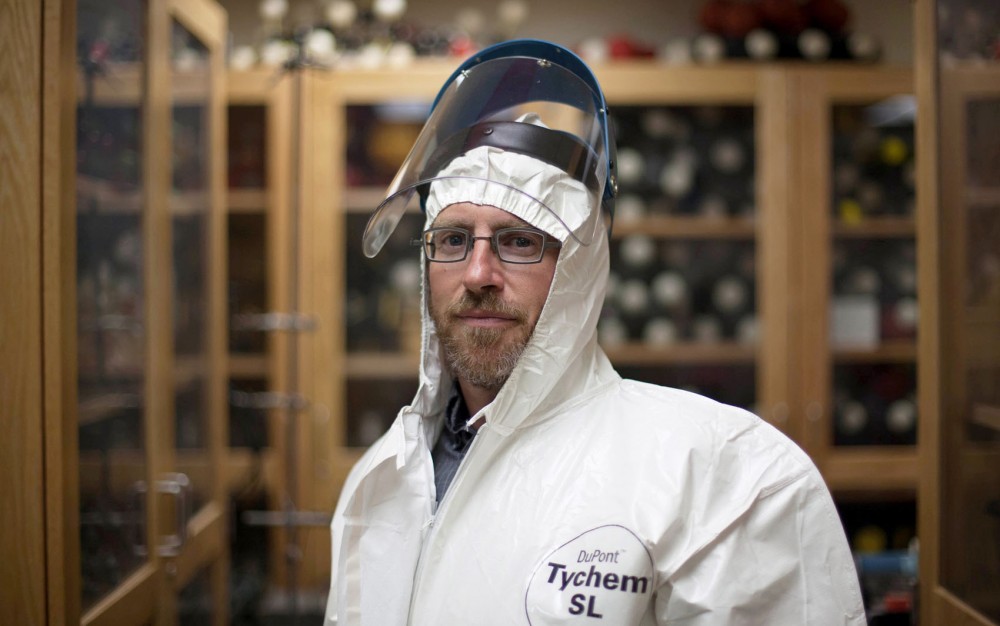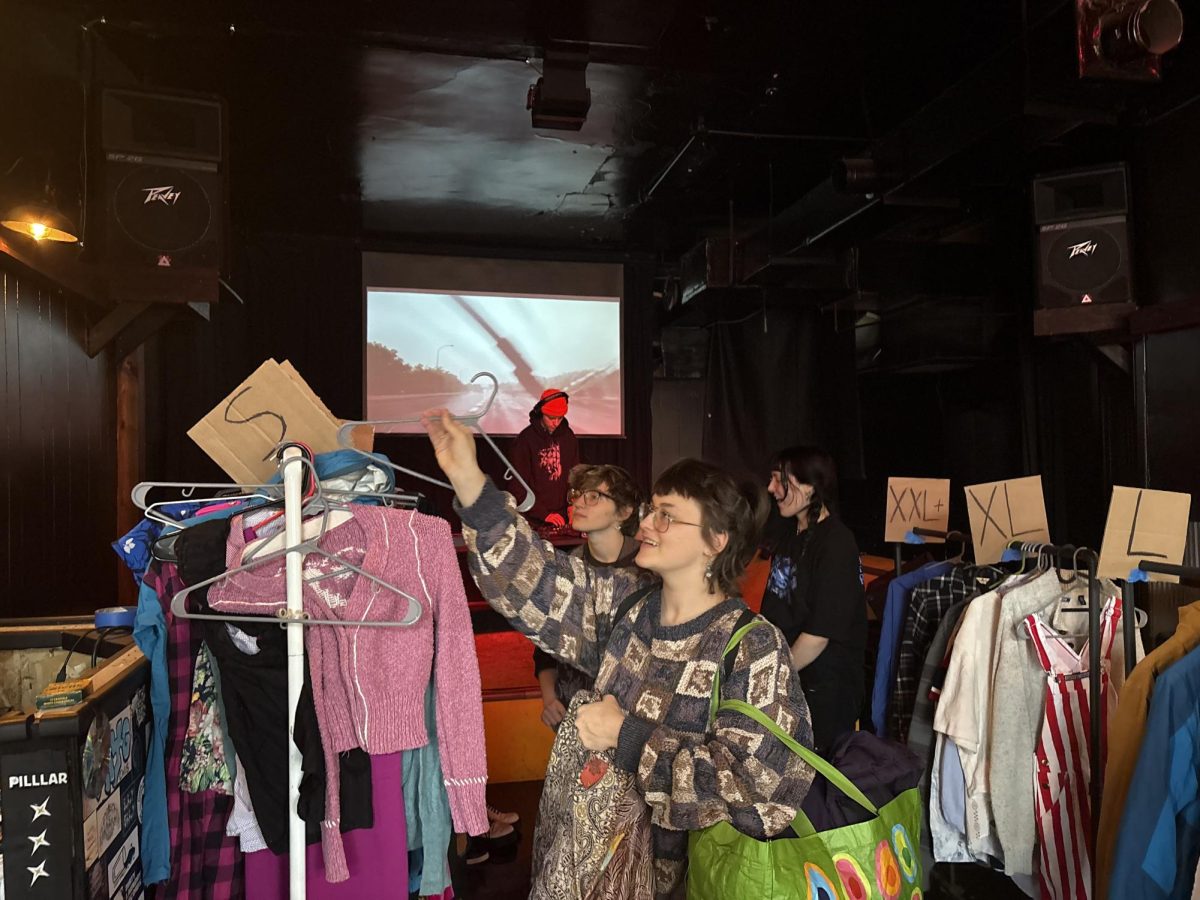It’s no secret that TV’s depictions of science are often rife with fantastical elements — you’ve probably encountered enough special effects-laden scenes to become numb to this fact. But “Breaking Bad” breaks the norm, adhering strictly to realism whenever possible.
The Emmy award-winning show portrays a high school chemistry teacher (Bryan Cranston) who starts synthesizing and selling meth to fund his costly cancer treatments, and the drama uses chemical principles all along the way.
As the show concludes the first half of its fifth and final season, A&E spoke to Department of Chemistry professor and chair — and “Breaking Bad” fan — William Tolman about the true elements involved in four of the show’s many dramatic chemical reactions.
SPOILER ALERT: Each explanation given reveals the plot from various episodes in seasons one and two.
1. Dissolving bodies in acid
(From Season One, Episode Two: “Cat’s in the Bag…”)
The show’s depraved genius, Walter White, exploits the corrosiveness of a solution of hydrofluoric acid to dispose of two dead drug dealers. Jesse Pinkman (Aaron Paul), Walt’s comedic foil and literal partner in crime, soaks their dead adversaries in hydrofluoric acid in his home’s second-story bathtub, causing the acid to eat through the tub and floor.
Chemistry:
Had Jesse used a plastic tub at White’s request, he could have saved a messy cleanup.
“You can’t store hydrofluoric acid in ceramic,” Tolman said. “It will eat through it.”
The only flaw the scene presents is in its rapid dramatic unveiling, our resident “Breaking Bad” chemist explains.
“I think that’s realistic, although, it would take a lot longer than they made it seem,” Tolman said.
2. The exploding drug den
(From Season One, Episode Six: “Crazy Handful of Nothin’”)
The increasingly bold (and bald) Walt carries mercury fulminate, not meth, in his pocket to scare off a potential dealer. He shows off the dangerous explosive as he throws the substance to the ground, shattering windows and the gangster’s (Tuco Salamanca) machismo.
Chemistry:
Tolman said mercury fulminate is an explosive, but highlights the implausibility of the cavalier way Walt handled it. The compound has an especially high sensitivity for even small amounts of friction.
“That definitely was not realistic,” Tolman said. “I mean, no way. It’s just too sensitive. Just putting it in your pocket could set it off.”
3. An Etch A Sketch Explosive
(From Season One, Episode Seven: “A No-Rough-Stuff-Type Deal”)
The good ol’ days of buying out large quantities of “pseudo” (pseudoephedrine) to make meth are long gone, what with the Drug Enforcements Administration’s increased regulation of the over-the-counter cold medicine. Thus, Jesse and Walt must break into a warehouse with another pyrotechnic display to obtain another source of meth-production: methylamine.
Chemistry:
White pulls a MacGyver-esque move and mixes aluminum powder from an Etch A Sketch and some rusty iron (iron oxide) to create thermite, a completely valid approach to a reaction that’s often shown to introductory chemistry classes.
“Once it ignites, then the reaction takes off and it releases an extraordinary amount of heat and it causes the formation of molten iron,” Tolman said.
With that heat, which would raise the temperature to more than 2,000 degrees Celsius, Tolman explains, the chemist and the meth-addict break the lock of a barricaded door. The methylamine is theirs.
4. A makeshift electrochemical battery
(From Season Two, Episode Nine: “4 Days Out”)
Jesse leaves the keys in the ignition of the pair’s mobile meth-lab (an RV) throughout the weekend marathon, and the two are stranded with a Winnebago full of meth in the middle of a New Mexico desert. After a lot of moping and Walt berating Jesse over the fact that he only brought a couple bags of Funyuns with him, he creates a battery out of found objects in their Winnebago.
Electrochemistry:
Professor Tolman was excited to note that Walt’s makeshift creation of an electrochemical battery is entirely accurate.
“I thought that was fantastic when I saw that,” Tolman said. “I thought, ‘Oh my gosh — he’s making a battery!’”
Walt uses the RV’s brake pad for its mercuric oxide and graphite. This serves as the cathode, which gains electrons. He also gathers spare metallic parts, nuts and bolts, for the zinc they contain. The zinc serves as the anode, where the other electrochemical half-reaction occurs (loss of electrons).
With potassium hydroxide solution leftover from their meth-making process serving as electrolyte (to conduct charge), Walt uses a sponge to separate the anode and cathode. Finally, he connects the cell components with copper wire and connects the parallel batteries to the RV’s jumper cables.
“The only question now is, will this supply enough current?” Walt says in the episode, posing the only hang-up in his plan.
“When he said that, I thought, ‘Yes! That’s the problem!’” Tolman said.
But it worked. As Walt sets the batteries up and connects the wires, he creates a spark and the RV is revived.
“It was a perfectly reasonable electrochemical cell using mercuric oxide and zinc,” Tolman said.
Final thoughts
TV certainly has an affinity for displaying scenes of high-tech science fakery a la “CSI,” so in many ways, “Breaking Bad” breaks badness with its attention to detail.
“It just makes me mad, and it makes people think that science is magic. That’s what bothers me,” Tolman said. “Science is not magic.”








